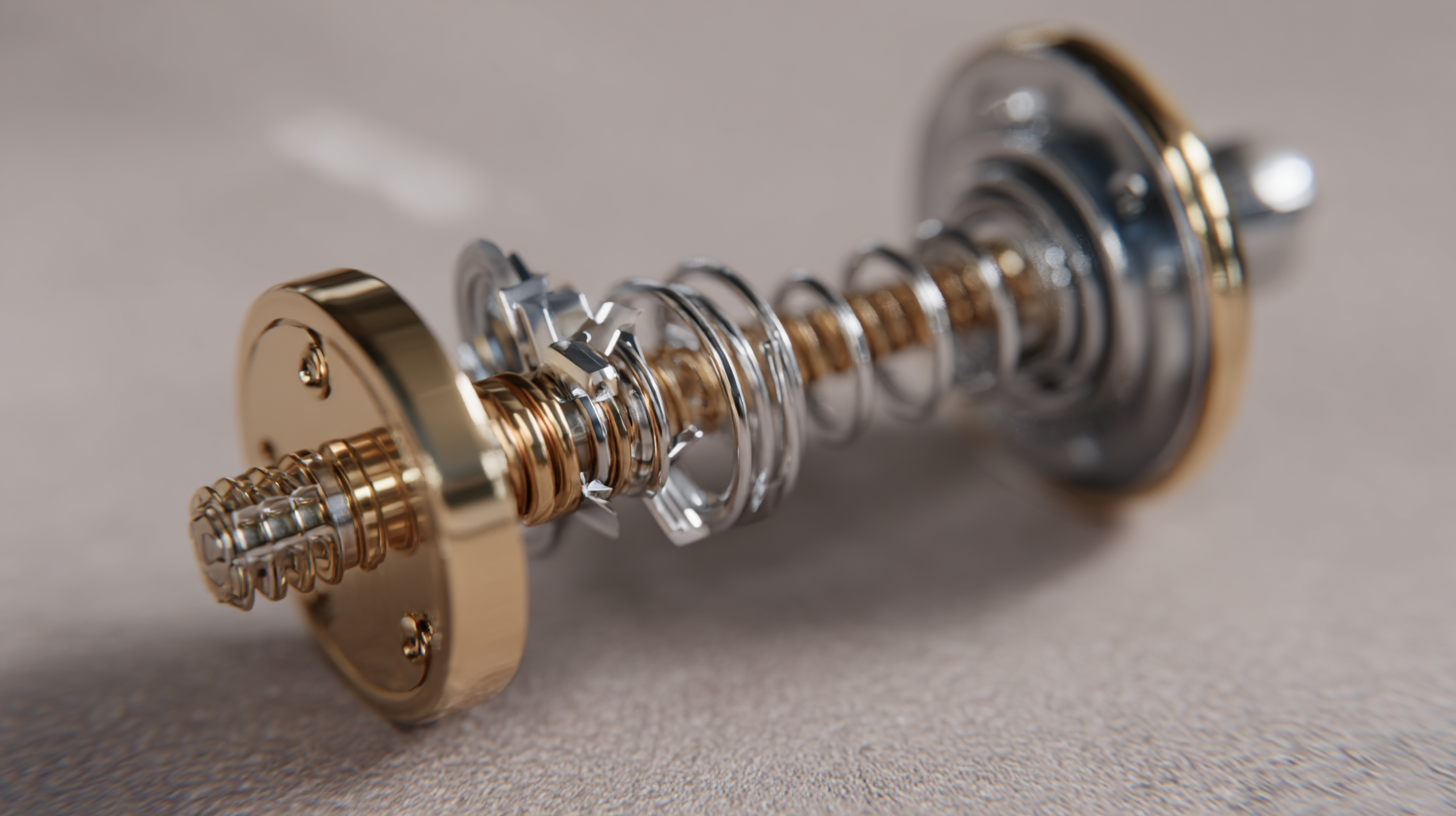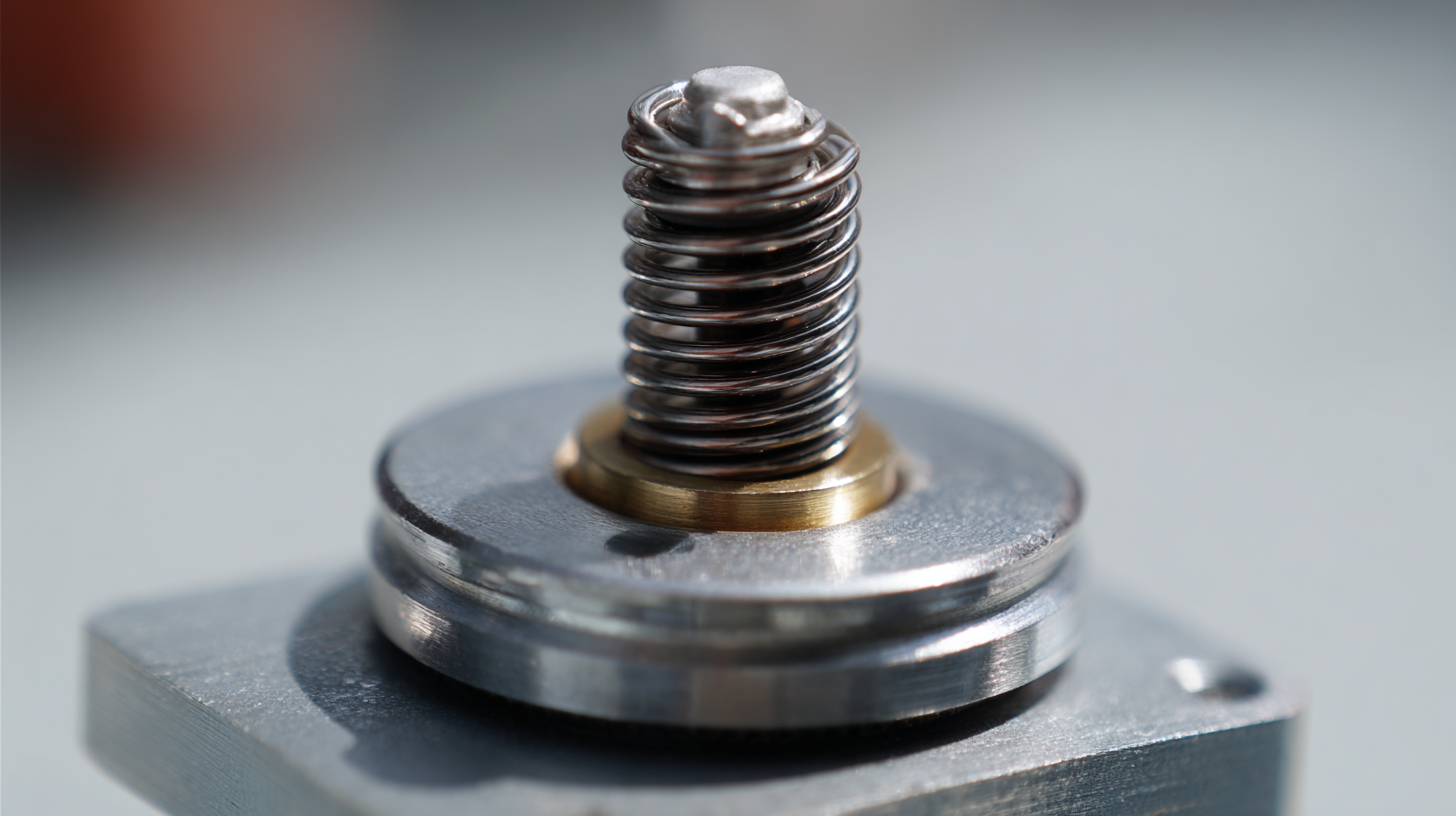Leave Your Message
In the realm of consumer electronics and everyday devices, the mechanism of the "Touch Button Spring" plays a pivotal role in ensuring user satisfaction and product reliability. According to a report by MarketsandMarkets, the global market for electronic components, including touch button mechanisms, is expected to reach $1 trillion by 2025, highlighting the growing significance of these technologies in modern devices. Touch button springs are integral in providing the tactile feedback users have come to expect, enhancing both usability and ergonomic design. As advancements in materials science and manufacturing processes continue to evolve, understanding the mechanics behind these springs will become increasingly vital for designers and engineers alike. With the rise of smart devices and their reliance on touch-based interfaces, the functionality and reliability of touch button springs can significantly impact overall user experience, necessity igniting further research and innovation in this area.

Touch button springs play a crucial role in the functionality of modern electronic devices, ensuring reliability and user satisfaction. The materials used in these springs significantly impact their performance and longevity. According to a report by MarketsandMarkets, the global push button switch market is expected to reach USD 2.6 billion by 2025, indicating a growing demand for high-quality components like touch button springs that enhance the tactile experience for users.
In terms of design, manufacturers are increasingly opting for advanced materials such as stainless steel and nylon composites, which offer superior resilience and decreased fatigue over time. A recent analysis from Research and Markets highlighted that the shift towards more innovative designs in consumer electronics is driving the development of touch button springs that are not only more efficient but also more sustainable. By focusing on material science and engineering, companies can create springs that provide exceptional performance while adhering to eco-friendly standards, thereby meeting both consumer and regulatory demands in today's market.

Springs are crucial components in touch button mechanisms found in everyday devices, providing the necessary force for actuation and feedback. Understanding their mechanical properties, specifically tensile strength and fatigue resistance, enhances the reliability of these devices. Tensile strength refers to the maximum load a spring can withstand while being stretched or compressed. Springs with high tensile strength can endure repeated use without deforming, ensuring longevity and consistent performance.
Fatigue resistance is another essential property, indicating a spring's ability to withstand cyclical loading over time. Springs in touch buttons often undergo thousands of compressions, making fatigue resistance vital to prevent premature failure. Selecting springs with superior fatigue characteristics can significantly impact user experience, offering smooth and responsive feedback.
**Tips:** When designing or selecting touch button springs, always consider the intended frequency of use. For high-usage applications, opt for springs made from materials specifically designed for durability. Regular maintenance can also extend the lifespan of springs, preventing unexpected failures and maintaining device performance.
The design of touch button springs can significantly influence user experience, as supported by various ergonomic studies. A well-engineered spring mechanism not only provides tactile feedback but also ensures that the button is responsive and comfortable to use. Factors such as spring tension and travel distance can greatly affect how users interact with devices, leading to either frustration or satisfaction. For instance, buttons that require too much force to press can be tiresome during prolonged use, while those with too little resistance may lead to accidental activations.
Tips: When designing or choosing devices, consider the spring's design and its impact on daily use. Look for buttons that offer a balanced feel: enough resistance to prevent accidental presses but not so much that it becomes hard to use. Testing different designs can also help identify which spring configurations enhance comfort and usability.
Additionally, the aesthetic integration of button springs is vital; a visually appealing button with a satisfying click can enhance the overall user experience. Ergonomically designed buttons can reduce strain and improve functionality, aligning with modern user expectations for convenience and efficiency.
Tips: Pay attention to user reviews focusing on button performance and ergonomics. Engaging with feedback can provide insights on how different spring designs affect user satisfaction and device interaction.
The market for touch button mechanisms is experiencing significant growth, driven by advancements in gesture recognition technology and consumer demand for enhanced user interfaces. The global gesture recognition market is projected to escalate from $31.05 billion in 2025 to an impressive $182.47 billion by 2032, showcasing a robust compound annual growth rate (CAGR). This growth is indicative of a broader trend towards intuitive interaction methods in everyday devices, pushing manufacturers to innovate continuously.
Simultaneously, the haptic technology sector is set to grow steadily, albeit at a moderate pace, with projections of a CAGR of about 3.5%. This growth reflects a growing consumer preference for tactile feedback that enhances the user experience across various applications, from smartphones to home appliances. As touch interfaces become more sophisticated, the market for electrical switches is also expanding, with expectations of growth from approximately $14.93 billion in 2025 to $22.49 billion by 2033 at a CAGR of 5.25%. These figures highlight the dynamic landscape of touch button spring mechanisms, fueled by innovation and changing user preferences.
| Device Type | Touch Button Mechanism | Market Growth Rate (2022-2027) | Key Innovations |
|---|---|---|---|
| Smartphones | Capacitance Touch Mechanism | 6.5% | Haptic Feedback Technology |
| Home Appliances | Mechanical Spring Button | 5.8% | Smart Control Integration |
| Automotive | Electronic Touch Sensors | 7.2% | Gesture Recognition Technology |
| Wearables | Pressure-Responsive Switch | 8.1% | Biofeedback Mechanisms |
| Gaming Consoles | Capacitive Touch Buttons | 6.0% | Adaptive Feedback Systems |
In the realm of everyday devices, touch button springs play a crucial role in enhancing user experience. A comparative analysis of different spring mechanisms reveals distinct performance advantages across various consumer devices. For instance, devices that utilize metal coil springs exhibit superior durability and tactile feedback, making them a popular choice in remote controls and kitchen appliances. These springs can withstand repeated use without significant wear, ensuring a consistent user interaction over time.

On the other hand, silicone rubber springs have gained traction in modern gadgets such as smartphones and smartwatches. These springs provide a softer touch and quieter operation, which is essential for devices where noise reduction is a priority. Although they may not match the longevity of coil springs, their design allows for more compact and lightweight structures, catering to the sleek aesthetics of contemporary technology. By examining these case studies, we gain valuable insights into how the choice of spring mechanism can influence both the functionality and user experience of everyday devices.






